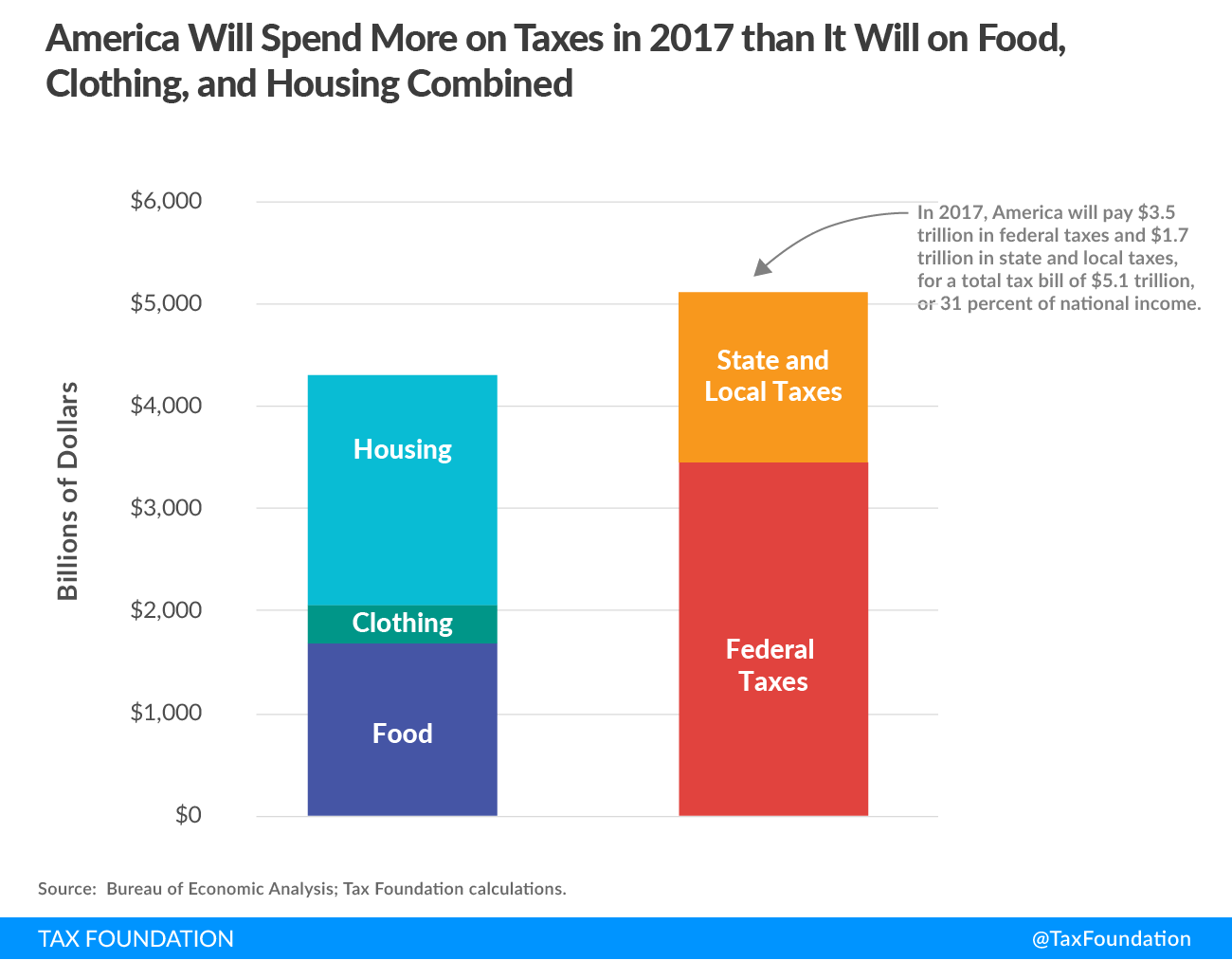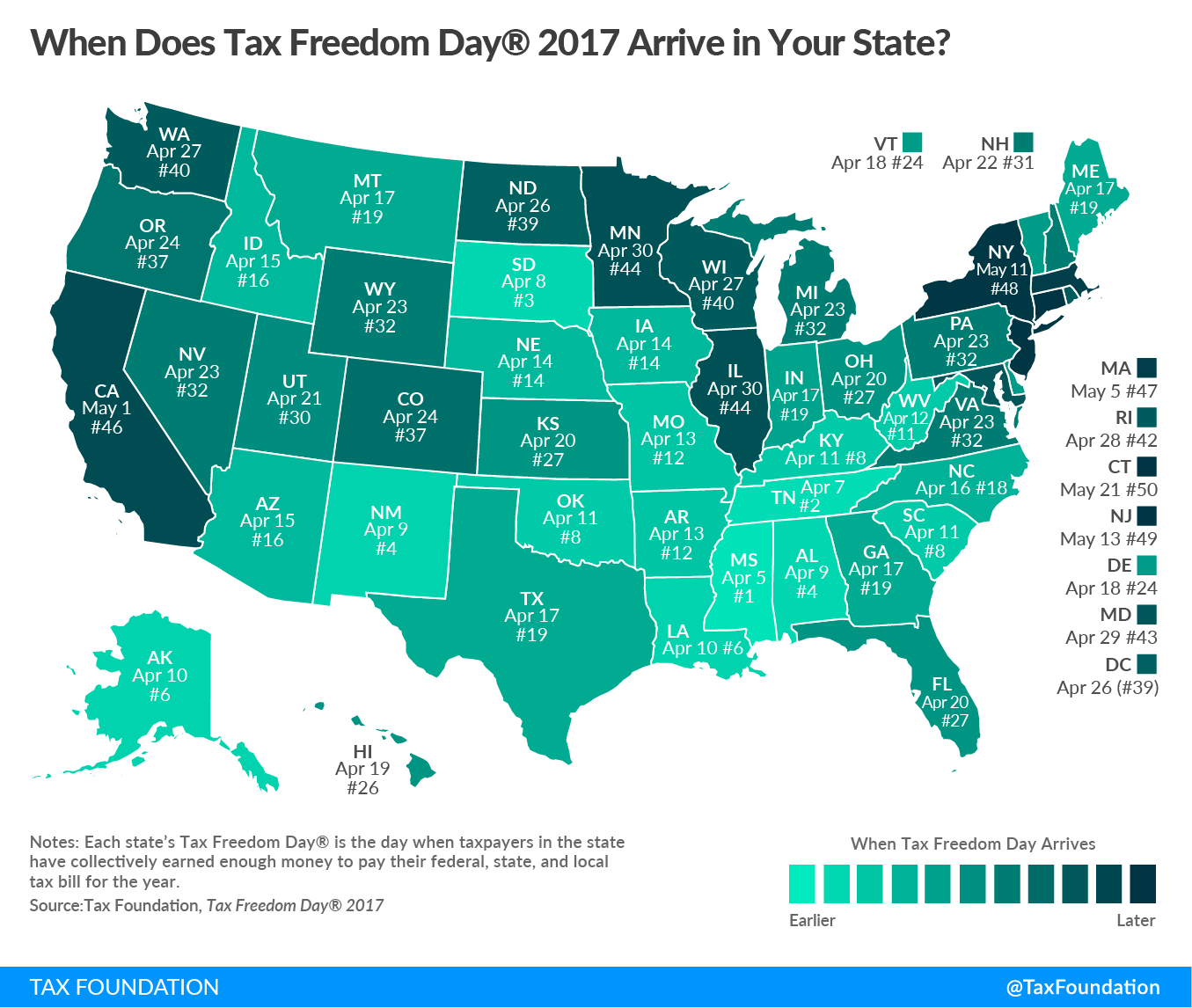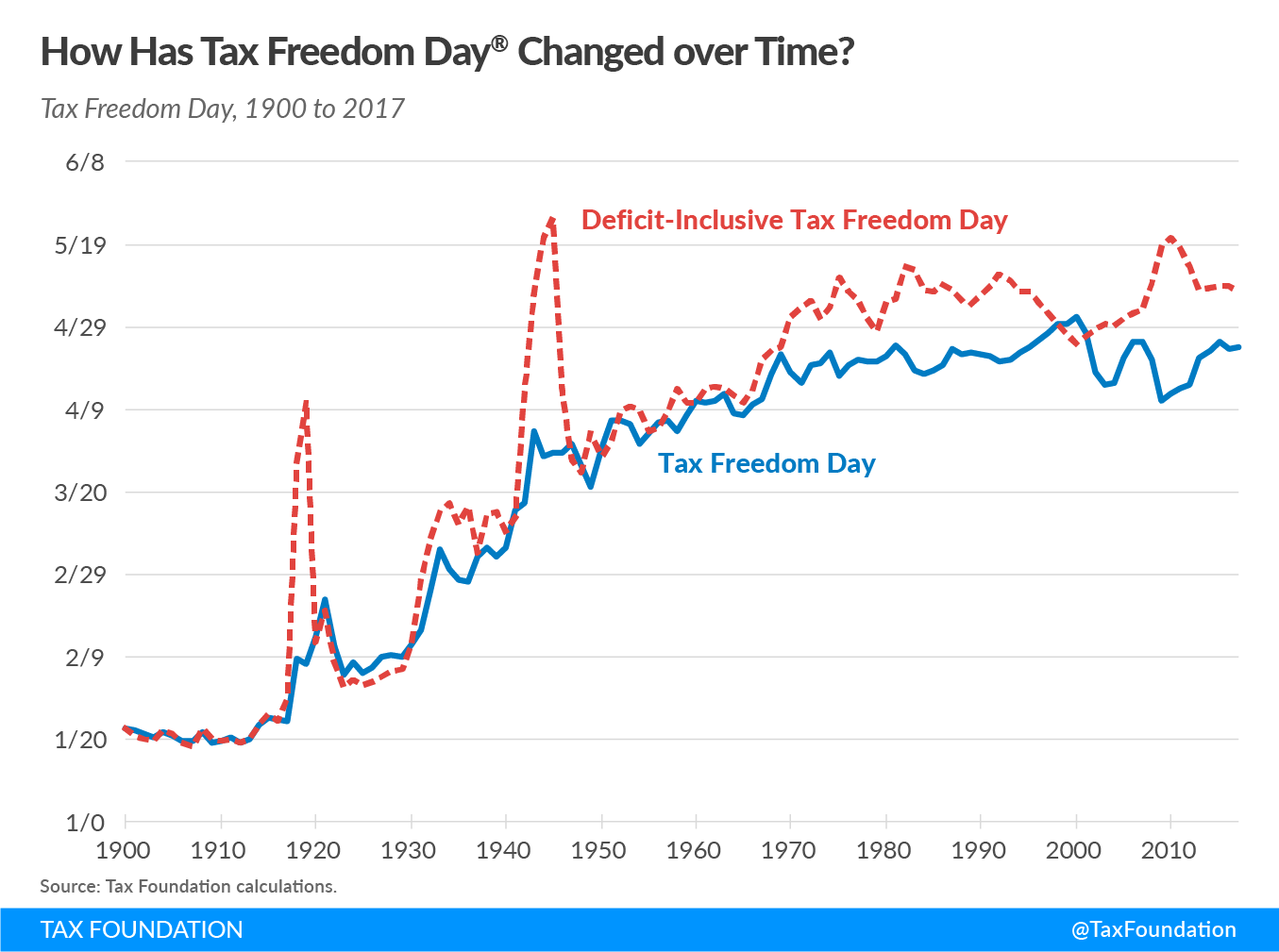Key Findings
- This year, TaxA tax is a mandatory payment or charge collected by local, state, and national governments from individuals or businesses to cover the costs of general government services, goods, and activities. Freedom Day falls on April 23rd, 113 days into the year.
- Tax Freedom Day is a significant date for taxpayers and lawmakers because it represents how long Americans as a whole have to work in order to pay the nation’s tax burden.
- Americans will pay $3.5 trillion in federal taxes and $1.6 trillion in state and local taxes, for a total bill of more than $5.1 trillion, or 31 percent of the nation’s income.
- Americans will collectively spend more on taxes in 2017 than they will on food, clothing, and housing combined.
- If you include annual federal borrowing, which represents future taxes owed, Tax Freedom Day would occur 14 days later, on May 7.
What Is Tax Freedom Day?
Tax Freedom Day® is the day when the nation as a whole has earned enough money to pay its total tax bill for the year. Tax Freedom Day takes all federal, state, and local taxes—individual as well as payroll, sales and excise, corporate and property taxes—and divides them by the nation’s income. In 2017, Americans will pay $3.5 trillion in federal taxes and $1.6 trillion in state and local taxes, for a total tax bill of $5.1 trillion, or 31 percent of national income. This year, Tax Freedom Day falls on April 23, 113 days into the year.
What Taxes Do We Pay?
This year, Americans will work the longest—46 days—to pay federal, state, and local individual income taxes. Payroll taxes will take 26 days to pay, followed by sales and excise taxes (15 days), corporate income taxes (10 days), and property taxes (10 days). The remaining six days are spent paying estate and inheritance taxes, customs duties, and other taxes.
When Is Tax Freedom Day if You Include Federal Borrowing?
Since 2002, federal expenses have surpassed federal revenues, with the budget deficit exceeding $1 trillion annually from 2009 to 2012. In calendar year 2017, the deficit is expected to shrink slightly, from $657 billion to $612 billion. If we include this annual federal borrowing, which represents future taxes owed, Tax Freedom Day would occur on May 7, 14 days later. The latest ever deficit-inclusive Tax Freedom Day occurred during World War II, on May 25, 1945.
When Is My State’s Tax Freedom Day?
The total tax burden borne by residents across states varies considerably due to differing tax policies and the progressivity of the federal tax system. This means that states with higher incomes and higher taxes celebrate Tax Freedom Day later: Connecticut (May 21), New Jersey (May 13), and New York (May 11). Residents of Mississippi bear the lowest average tax burden in 2017, with their Tax Freedom Day having arrived on April 5. Also early were Tennessee (April 7) and South Dakota (April 8).
How Has Tax Freedom Day Changed over Time?
The latest ever Tax Freedom Day was May 1, 2000; in that year, Americans paid 33 percent of their total income in taxes. A century earlier, in 1900, Americans paid only 5.9 percent of their income in taxes, so that Tax Freedom Day came on January 22.
Methodology
In the denominator, we count every dollar that is officially part of net national income according to the Department of Commerce’s Bureau of Economic Analysis. In the numerator, we count every payment to the government that is officially considered a tax. Taxes at all levels of government—federal, state, and local—are included in the calculation. In calculating Tax Freedom Day for each state, we look at taxes borne by residents of that state, whether paid to the federal government, their own state or local governments, or governments of other states. Where possible, we allocate tax burdens to each taxpayer’s state of residence. Leap days are excluded, to allow comparison across years, and any fraction of a day is rounded up to the next calendar day.
Share this article

